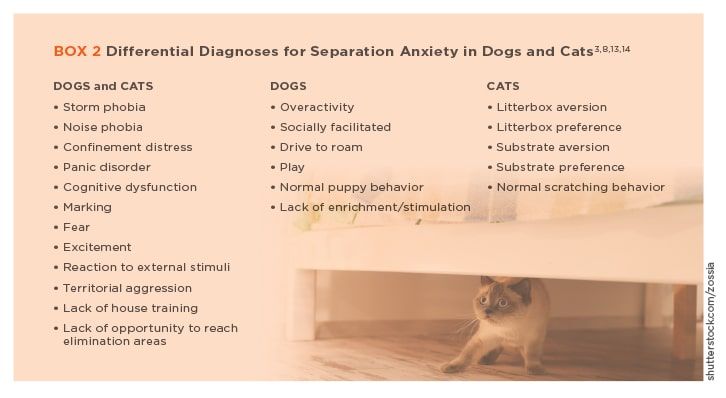Cat pheromones are chemical signals produced by cats to communicate with other cats and animals. Pheromones are released from glands located around a cat’s face, tail and between their paw pads. Cats use pheromones to mark territory, signal stress or danger, ease anxiety, promote feelings of well-being and facilitate mother-infant interactions. Cat pheromones provide information that shapes cat behavior and social dynamics. Understanding and utilizing cat pheromones can be helpful for pet owners seeking to influence cat behavior or promote a calm environment.
What Are Cat Pheromones?
Cat pheromones are chemical signals released by cats that play an important role in feline communication and behavior. According to the Feliway website, “Pheromones are a type of chemical communication that all cats use to interact with each other and the world around them.”
More specifically, cat pheromones are produced in glands on a cat’s face, tail and paws. When a cat rubs against objects, scratches or sprays urine, pheromones are released and send signals to other cats. The Feliway website explains that these pheromone signals can communicate information about territory, sexual availability, and individual identity.
Some key pheromones produced by cats include:
- Felinine – found in cat urine and plays a role in territorial marking
- F3 facial pheromone – produced from glands on cat cheeks and sends signals about social colonization
- F1 spray pheromone – released when cats spray urine and indicates sexual availability
In summary, cat pheromones are chemical signals that play an important communication role between cats by transmitting information about territory, sexual signals, and identity.

How Do Cat Pheromones Work?
Cat pheromones are natural chemicals released by cats that trigger social responses in other cats and animals. There are three main types of cat pheromones that affect behavior:
Feline facial pheromones (FFP) are produced when a cat rubs its face on objects, marking them with scent. As per PetMD (https://www.petmd.com/cat/behavior/how-do-calming-pheromones-work-cats), these pheromones provide cats with reassurance and signal ownership of territory. FFP is found in many synthetic cat pheromone products.
Feline interdigital semiochemicals are pheromones released from glands between a cat’s paw pads when scratching. According to Fear Free Happy Homes, scratching visually and chemically marks territory.
Feline mammary secretions are nursing pheromones that provide reassurance and signal the location of milk. As explained by Comfort Zone (https://www.comfortzone.com/behavior-blog/pheromones/what-are-cat-pheromones), these aid mother-kitten bonding.
Overall, cat pheromones can have a calming effect and help with territorial anxiety issues in cats. Some pheromone products are marketed to help improve cat behavior.
Types of Cat Pheromone Products
There are several types of products that contain cat pheromones and are designed to help calm and relax cats in stressful situations:
Sprays – These pheromone sprays can be applied to objects like cat carriers or bedding. According to Feliway, the popular cat pheromone brand, spraying 8-10 pumps of the synthetic pheromone formula in places frequented by cats can help provide reassurance and comfort. Sprays are easy to apply directly where needed.
Diffusers – Diffusers steadily evaporate the cat pheromone formula into the air so it is continuously present. The diffusers cover a larger area for a longer period, up to 4-6 weeks. They are ideal for using in rooms that cats spend a lot of time in. Feliway diffusers are a popular choice.
Collars – Cat calming pheromone collars release the pheromones so they are present wherever the cat goes. They provide a constant source of the pheromone that can help reassure cats in many situations. The collars typically last about a month before needing to be replaced.
Are Cat Pheromones Safe for Dogs?
There is limited research on the safety and efficacy of cat pheromones for dogs. However, some anecdotal evidence suggests that cat pheromones may be safe for dogs when used as directed.

According to Feliway, one of the major manufacturers of cat pheromone products, their pheromones are safe to use around dogs. They state that while dogs will not experience any calming effects like cats, the pheromones are not harmful to dogs (Feliway).
One small study by the University of Lincoln found that using either a cat or dog pheromone product modestly improved relationships between cats and dogs living together. This provides some evidence that cat pheromones do not negatively impact dogs (International Cat Care).
However, more research is still needed on the direct effects of cat pheromones on dog behavior and physiology. Most evidence is anecdotal at this time. Owners should monitor their dogs closely when using cat pheromone products and discontinue use if any adverse effects are observed.
Potential Concerns and Side Effects
While cat pheromones are generally considered safe, there are some potential side effects to be aware of when using them around dogs:
Respiratory Irritation – Cat pheromones can cause irritation to the respiratory tract in some dogs. This may lead to coughing, sneezing or wheezing. Dogs with pre-existing respiratory conditions may be more susceptible. The reaction seems to be dose-dependent, with higher concentrations of pheromones more likely to trigger irritation. Using pheromones as directed and monitoring your dog’s reaction is advised.
Allergies – As with any substance, some dogs may develop an allergic reaction to cat pheromones. Signs can include itchy skin, rashes, vomiting or diarrhea. Discontinuing use of the pheromones should relieve symptoms. Only reintroduce under veterinary supervision to confirm allergy. Pheromones derived from a different species may be tolerated.
While raspatory irritation is most common, some additional rare side effects like lethargy or agitation have been anecdotally reported. However, controlled studies have not found a significant risk of adverse effects when used as directed in dogs (1). As with any supplement, supervision and monitoring for any unusual reaction is prudent.
(1) https://triangleanimalclinic.com/wp-content/uploads/2021/09/adaptil-feliway-pheromones-1.pdf
Effectiveness for Dogs
Research indicates that cat pheromones can help reduce anxiety and stress behaviors in dogs when used correctly. A study published in the Journal of the American Animal Hospital Association found that a synthetic feline facial pheromone product reduced signs of anxiety in dogs during veterinary exams and clinically improved the dogs’ emotional states. The study concluded that pheromone products like Feliway can be an effective tool for improving the welfare of anxious or stressed dogs.
Specifically, cat pheromones may help dogs who exhibit stress behaviors like barking, chewing, urination, hypervigilance, and aggression. The pheromones have a calming effect that can minimize reactivity and fears. They promote relaxation by activating dogs’ vomeronasal organs and olfactory system.

However, it’s important to note that cat pheromones are not a cure-all. They work best alongside other treatments like behavior modification training, exercise, and enrichment. When used properly as part of a comprehensive behavior management plan, cat pheromones can be a safe and effective way to ease anxiety and stress in dogs.
Proper Use and Dosage
When using cat pheromone products on dogs, it’s important to follow the manufacturer’s instructions carefully. According to Feliway’s website, their classic pheromone spray should be applied by spraying 8-10 pumps https://us.feliway.com/products/feliway-classic-spray-60ml at least 15 minutes before introducing the dog to a stressful situation like a car ride or boarding facility. The spray should be directed at hard surfaces, bedding, crates, carrier walls, etc. Avoid spraying it directly on the dog’s fur.
For Feliway’s multicat diffusers, the company recommends 1 diffuser per 700 square feet, and replacing the cartridge every 4-6 weeks for continuous coverage. Always follow the coverage guidelines and replacement schedule for any pheromone diffuser product. Using too little may reduce effectiveness, while overuse can cause sensitivity in some pets.
When applying pheromone sprays or wipes directly to objects, bedding, crates, etc., be sure to reapply daily as directed on the label. The pheromones can dissipate over time and need to be replenished.
Never use more pheromone product than recommended, as overdose is possible. Carefully measure doses of oral pheromone supplements like capsules as well. More does not necessarily equal better results.
Alternatives for Dogs
While cat pheromones may be effective for some dogs, there are many other calming products on the market specifically designed for canines that are worth considering. Some popular alternatives include:
Calming treats – These often contain ingredients like chamomile, L-tryptophan, ginger, and hemp to promote relaxation. Some top brands are Zesty Paws Calming Bites, PetHonesty Calming Hemp Chews, and Purina Pro Plan Calming Care Probiotic Dog Supplement.
Calming collars – These collars release pheromones or essential oils to provide anxiety relief for dogs. The Adaptil Calming Collar mimics dog appeasing pheromones while the SENTRY Calming Collar uses lavender and chamomile.
Calming sprays – Sprays like Adaptil and Pet Remedy contain pheromones or plant extracts that can be sprayed on bedding or bandanas to help relax anxious pups. They provide on-the-go anxiety relief.
Anxiety wraps – These garments apply gentle pressure to help calm dogs, similar to swaddling infants. Brands like ThunderShirt and ZenDog use compression to relieve stress.
Essential oil diffusers – Diffusing calming essential oils like lavender can help create a soothing environment for stressed dogs. Always use oils safely around pets.
Supplements – Products with ingredients like L-theanine, chamomile, and hemp target anxiety through natural relaxation. Nutramax Welactin Calming Supplement is a popular chewable option.
Training aids – Working with a trainer to teach relaxation techniques or using devices like calming music or games can also help reduce anxiety.
The Bottom Line
The research shows that cat pheromones are generally safe and effective for dogs when used appropriately. Cat pheromones like Feliway contain synthesized versions of cat facial pheromones and mimic scents that provide comfort and familiarity to cats. Studies have found that these pheromones can also help relax and calm dogs in stressful situations. However, some potential side effects in dogs may include lethargy, anxious behaviors, increased barking or agitation. Proper dosage is important, as cat pheromones are made for cats specifically, and dogs have different noses and may be more sensitive. Alternatives like dog-specific pheromones, natural calming supplements or CBD are available if cat pheromones do not work or cause negative reactions in a dog. Overall, research shows cat pheromones are generally safe for dogs when used as directed and can be an effective option for helping dogs relax and providing comfort in challenging situations.


